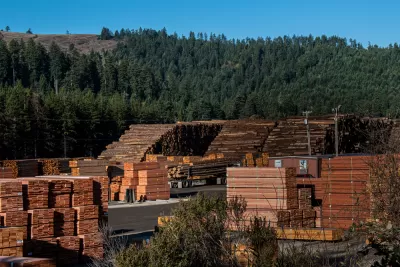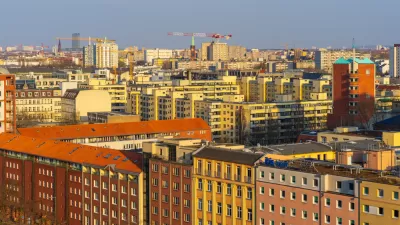The cost of lumber has more than doubled in the past year, according to industry sources, adding more than $24,000 to the cost of a new home.

Lumber is the hottest commodity on the planet, according to an article by Robinson Meyer.
Prices are spiking for lumber at the same time as increasing number of Americans are looking to buy homes. With new housing development constrained by lumber prices in an already tight housing market, it's getting even harder to see a light at the end of the tunnel for the lower end of the housing market.
To describe the trend in lumber costs as a spike might be an understatement:
In North America, lumber is typically traded in units of 1,000 board feet; builders need about 15,000 board feet, on average, to construct a single-family home. From 2015 to 2019, lumber traded at $381 for 1,000 board feet, according to Fastmarkets. This month, it reached an all-time high of $1,104 for the same amount.
Naturally, the cost of lumber has consequences for the cost of housing. "The lumber shortage has added at least $24,000 to the cost of a new home, according to the National Association of Homebuilders."
As Meyer makes clear, both supply and demand are contributing to the high costs. The lumber supply is dwindling as climate change has "devastated" the lumber industry in Canada, according to the article. "A catastrophic and multi-decade outbreak of bark-eating beetles, followed by a series of historic wildfire seasons, have led to lasting economic damage in British Columbia, a crucial lumber-providing province," writes Meyer.
The story of the lumber market involves more unprecedented and historic pressures than just climate change, however. The source article includes a story that summarizes the lumber market with three D's: DIY, demand, and demography. As the economy shut down last year, the lumber industry planned for a long recession. Instead, the main trends influencing the industry were hordes of home improvement projects while the pandemic apparently pushed much of the largest generation ever to enter the homebuying market.
FULL STORY: Why Dead Trees Are ‘the Hottest Commodity on the Planet’

Planetizen Federal Action Tracker
A weekly monitor of how Trump’s orders and actions are impacting planners and planning in America.

Maui's Vacation Rental Debate Turns Ugly
Verbal attacks, misinformation campaigns and fistfights plague a high-stakes debate to convert thousands of vacation rentals into long-term housing.

Restaurant Patios Were a Pandemic Win — Why Were They so Hard to Keep?
Social distancing requirements and changes in travel patterns prompted cities to pilot new uses for street and sidewalk space. Then it got complicated.

In California Battle of Housing vs. Environment, Housing Just Won
A new state law significantly limits the power of CEQA, an environmental review law that served as a powerful tool for blocking new development.

Boulder Eliminates Parking Minimums Citywide
Officials estimate the cost of building a single underground parking space at up to $100,000.

Orange County, Florida Adopts Largest US “Sprawl Repair” Code
The ‘Orange Code’ seeks to rectify decades of sprawl-inducing, car-oriented development.
Urban Design for Planners 1: Software Tools
This six-course series explores essential urban design concepts using open source software and equips planners with the tools they need to participate fully in the urban design process.
Planning for Universal Design
Learn the tools for implementing Universal Design in planning regulations.
Heyer Gruel & Associates PA
JM Goldson LLC
Custer County Colorado
City of Camden Redevelopment Agency
City of Astoria
Transportation Research & Education Center (TREC) at Portland State University
Jefferson Parish Government
Camden Redevelopment Agency
City of Claremont





























